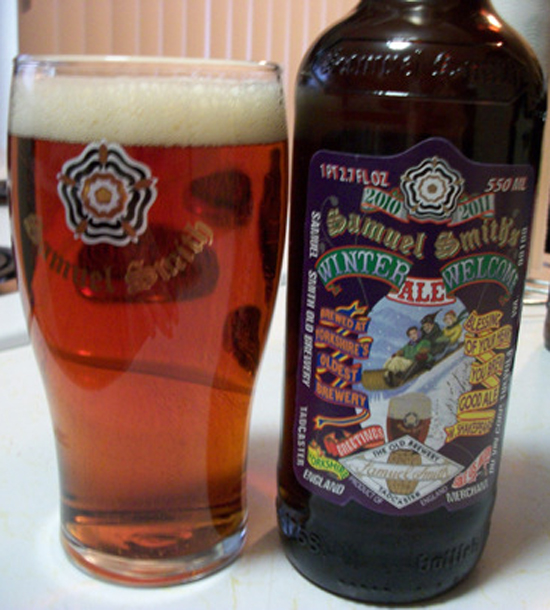
The Beer Nut: Winter Warmers0
Posted In Blog,Booze,Food & Drink
by Jason K
Soon the cold wind of winter will usher in the holiday season. That means Turkey dinners, stuffing, cranberry sauce shaped like a can, and Santa squeezing his fat ass down your chimney. The change of weather beckons, and a change in thirst follows. Out with the weizens, summer ales, and heat quenching brews. In with the thick, hearty ales of winter; beers so satisfying they often are best served alone so as not to compete with a meal. These are best known as Winter Warmers.
The exact definition of the style is one that is rather difficult to pin down. Originally these beers were brewed for the festivals of the winter season, bringing a tendency towards higher gravity, and higher ABV, to assist in shrugging off the Northern European cold. Flavors were big and bold, emphasizing strong malt character with minimal to no pronounced hop character. Modern American versions have steered away from this formula and can now be found to include spices, complex Belgian yeast strains, or high IBU’s from large hop dosings. Though distinctly different, all can be included as Winter Warmers.
Samuel Smith Winter Welcome is a classic English example of the style.

It pours a rich copper color, featuring great clarity with a robust and slightly off-white head to match. Retention is medium with good lacing exhibited upon the glass. The aroma is rich with notes of biscuit and light caramel, plus a very faint note of pungency from a light dose English hops. This beer presents a wonderfully complex flavor while not being oppressive or cloying with sweetness. Malt flavor is dominant, presenting a bready and slightly nutty character with a medium body. Hop flavor is minimal at best, presenting a gentle bitterness to balance if nothing else. Notes of oak and a mild minerally quality show through in the finish of the beer; a distinctively English character contributed by the top-fermenting yeast strain. In addition, the yeast strain lends a slight note of diacetyl to the flavor profile, exhibiting a slight butterscotch flavor that lingers past the finish. All in all a very drinkable and approachable example of the style.
Other recommended examples of the style include Anderson Valley Brewing Company Winter Solstice Ale, Deschutes Jubelale and Sam Adams Old Fezziwig Ale, which should all be easily located at most better markets or beer stores.

